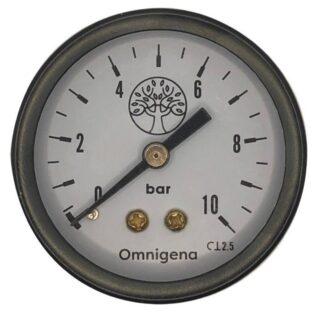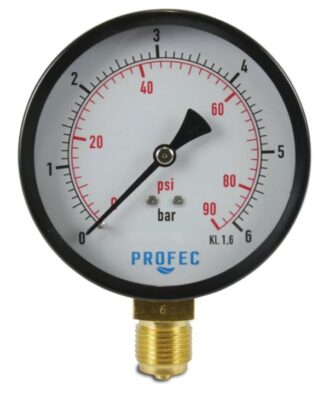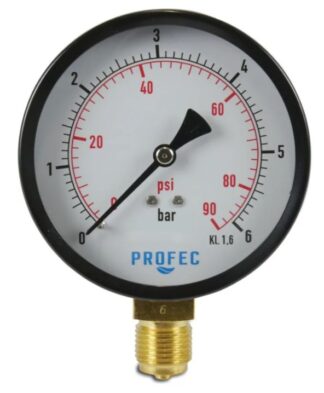Your cart is currently empty!
Pressure gauge
A manometer is used to measure pressure in a system — for example, in a water pump system, pressure tank, water line, or pressure vessel.
💧 In a water pump system, a manometer is used to:
-
Display the current water pressure
It shows how many bars (or kPa) of pressure are in the system, so you can tell if the pump is operating correctly.
Example: If the pressure ranges between 2–4 bar, you can see when the pump starts (e.g. at 2 bar) and when it stops (e.g. at 4 bar). -
Adjust the pressure switch
When setting the start and stop pressure on the pressure switch, you use the manometer to see exactly at which pressure the pump starts and stops. -
Troubleshoot problems
-
If the pressure drops quickly → may indicate a leak or a faulty check valve.
-
If the pressure never rises → the pump isn’t drawing water or the discharge line is open.
-
If the pressure gets too high → the pressure switch is incorrectly set or stuck.
-
⚙️ Types of manometers
-
Analog (most common): a dial with a pointer and scale in bar or kPa.
-
Digital: displays the pressure electronically, sometimes with memory or alarm limits.
📍 Placement
The manometer is usually installed:
-
On the discharge side of the pump, often near the pressure switch or pressure tank.
-
Some pressure tanks have a built-in manometer.




